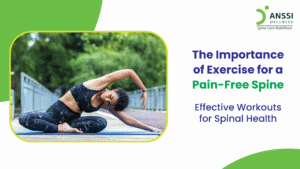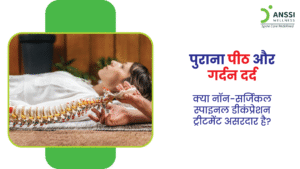Lordosis is the medical name for an excessive inward curve of the spine that can interfere with your daily activities by negatively affecting the lower back and neck area. Sometimes called as swayback, it can cause excruciating pain and discomfort in severe cases by exerting plenty of pressure on the spine. Lordosis that affects the lower back and neck region is called lumbar lordosis and cervical lordosis, respectively. With a lack of appropriate treatment, it can significantly impact your mobility.
Common Causes of Lordosis
Specific factors and health conditions can elevate the risk of lordosis.
These include:
- Obesity
- Improper posture on a regular basis
- Injury or disease related to the spine
- Osteoporosis (a condition in which bones become brittle and weak)
- Family genetics (inherited from one of the parents)
- Spondylolisthesis (a spinal disorder involving a spinal vertebra slipping forward onto the vertebra under it)
- Achondroplasia (deterioration in bone growth in the cartilage of the growth plate)
- Osteosarcoma (type of bone cancer that starts in the cells that form bones)
What Are the Types of Lordosis?
There are 5 primary types of lordosis.
Postural Lordosis
Generally caused by obesity, postural lordosis comprises weak back and stomach muscles that aren’t able to support the spine, resulting in the spine curving forward.
Congenital/Traumatic Lordosis
An injury or trauma that causes a fracture in the connecting links of the spine, this type of lordosis causes pain in the lower spine region. It can also be caused due to growth defects. Over time, it can lead to pinched nerves in the spine.
Post-surgical Laminectomy Hyperlordosis
After a laminectomy (surgery wherein spinal bones are removed) is conducted over various spine levels, it can result in the spine becoming unstable to expand the normal curve to an abnormal level. This condition is more common in children than adults.
Neuromuscular Lordosis
Neuromuscular lordosis comprises a long list of disorders or conditions that can cause various spinal curvature issues. Each type of problem features several treatment options.
Lordosis Secondary to Hip Flexion Contracture
A comparatively rare condition, this type of lordosis includes developing a contracture of the hip joints culminating in the spine being drawn out of normal alignment.
Can Pregnant Women Experience Lordosis?
A considerable number of pregnant women exhibit symptoms of lordosis such as hips pushed forward, buttocks sticking out, back pain, etc., due to the protruding belly. However, in many cases, it’s just the body’s adaptation to the pregnancy, and the back pain disappears after the baby’s birth.
How to Diagnose Lordosis?
Diagnosing lordosis generally involves doctors checking patients’ past medical history, conducting a physical examination and enquiring about the symptoms. After getting a brief idea, doctors generally recommend diagnostic tests, including a spine x-ray, to examine the angle of the spinal curve. An MRI or CT scan may also be recommended to ensure an accurate diagnosis.
Lordosis Treatment
Treatment is necessary for lordosis only in severe cases. It comprises the following treatment options:
- Medications to decrease back pain and swelling
- Physical therapy and exercises for bolstering muscles and increasing range of motion
- Weight loss to improve posture
- Braces for children and teenagers
- Nutritional supplements like vitamin D
Nonsteroidal anti-inflammatory drugs may also be prescribed in case of intense back pain caused by lordosis. The kind of treatment recommended to a patient depends on the severity of the spinal curve and the reason behind it.
FAQs:
In the majority of cases, lordosis gets corrected over time without any treatment. However, in severe cases, treatment is required to cure lordosis.
Yes, lordosis in adults can be cured with or without treatment, depending on its severity.
About ANSSI:
ANSSI Wellness focuses on improving the quality of life for patients suffering from spinal issues, aiming to provide relief where other conventional treatments have failed. Through advanced non-surgical spinal decompression treatment, ANSSI is committed to helping patients avoid surgery and recover in a safe, effective, and compassionate environment.



